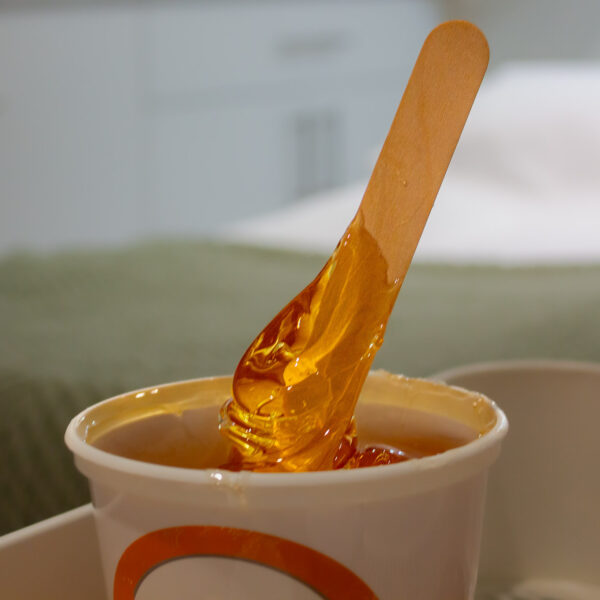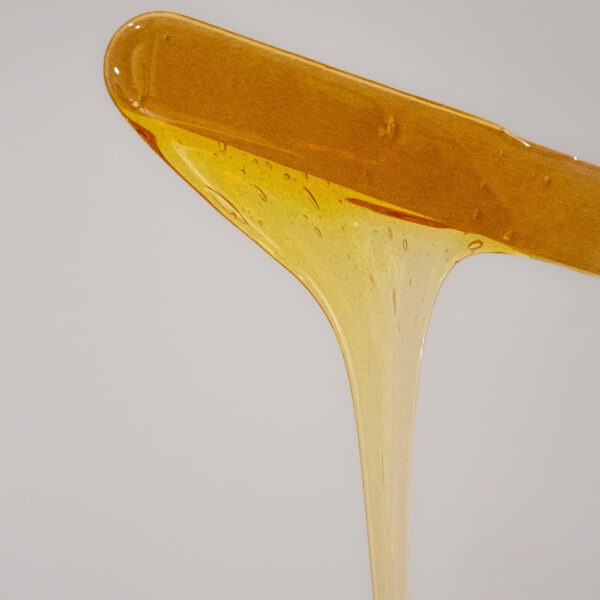Winnipeg Sugaring & Waxing
What is Sugaring?
Body sugaring is a method of hair removal that dates back to ancient times, believed to have originated in ancient Egypt around 1900 BCE. It utilizes a natural paste composed primarily of sugar, water, and lemon juice. This paste is applied to the skin in the opposite direction of hair growth and then swiftly removed in the other direction, effectively pulling the hair out from the root. Over millennia, this ancient practice has evolved into a popular alternative to traditional waxing, prized for its use of natural ingredients and its effectiveness in achieving smooth, hair-free skin.
Experience the ancient art of hair removal at Lotus Bloom for a beautifully smooth result.

Benefits of Lotus Bloom Winnipeg Sugaring
Sugaring is an ancient Egyptian hair removal method, cherished for its vegan and organic formulation. Crafted from ethically sourced sugar, pure water, and fresh lemon juice, it stands as a natural and hypoallergenic choice for smooth and gentle hair removal.
Many individuals prefer sugaring over waxing due to its gentle adherence to hair rather than skin, resulting in a significantly more comfortable experience for most.
Sugaring provides gentle exfoliation by targeting only dead skin cells, unlike waxing, which can inadvertently remove live skin cells along with hair. This approach minimizes the risk of irritation and helps prevent ingrown hairs, promoting smoother and healthier skin.
Sugaring can lead to slower and finer hair regrowth over time, often resulting in longer periods between treatments compared to shaving.
Thanks to its gentle formulation and use of natural ingredients, sugaring is exceptionally well-suited for individuals with sensitive skin.
Sugaring is versatile and can effectively remove hair from multiple parts of the body, including sensitive areas such as the face, bikini line, and underarms.
Sugaring paste is water-soluble, ensuring effortless cleanup with water in case of any residual paste on the skin after treatment.

Sugaring vs Waxing
Sugaring & Waxing Pricing
-
Mini Area
20 (Sugar) • 15 (Wax)
Lip, chin, areola, toes, or fingers
-
Small Area
30 (Sugar) • 23 (Wax)
Underarms, eyebrows, or half neck
-
Medium Area
45 (Sugar) • 35 (Wax)
Lower half legs, stomach, shoulder, half arms, lower back, full neck, or lip, chin & sideburns
-
Large Area
60 (Sugar) • 50 (Wax)
Full arm, upper leg, butt cheeks, chest or full face
-
X-Large Area
75 (Sugar) • 65 (Wax)
Full back, full leg, or stomach & chest
-
Female Brazilian
61 (Sugar) • 51 (Wax)
Female pubic area
-
Manzilian
80 (Sugar)
Male pubic area For your comfort, only sugaring is available for Manzilians (no waxing)
-
Mini Area
20 (Sugar) • 15 (Wax)
Lip, chin, areola, toes, or fingers
-
Small Area
30 (Sugar) • 23 (Wax)
Underarms, eyebrows, or half neck
-
Medium Area
45 (Sugar) • 35 (Wax)
Lower half legs, stomach, shoulder, half arms, lower back, full neck, or lip, chin & sideburns
-
Large Area
60 (Sugar) • 50 (Wax)
Full arm, upper leg, butt cheeks, chest or full face
-
X-Large Area
75 (Sugar) • 65 (Wax)
Full back, full leg, or stomach & chest
-
Female Brazilian
61 (Sugar) • 51 (Wax)
Female pubic area For your comfort, only sugaring is available for Brazilians (no waxing)
-
Manzilian
80 (Sugar)
Male pubic area For your comfort, only sugaring is available for Manzilians (no waxing)
Frequently Asked Questions
The duration of a sugaring or waxing appointment varies depending on the area being treated and the amount of hair to be removed.
Generally, smaller areas such as the upper lip, eyebrows, or underarms can take about 15 to 30 minutes. Medium-sized areas like the bikini line or half legs typically require 30 to 45 minutes. Larger areas, such as full legs, back, or Brazilian sugaring/waxing, can take 45 minutes to an hour or more.
For a more precise estimate tailored to your specific needs, it’s best to consult with your technician when booking your appointment.
After your sugaring or waxing appointment, it’s important to follow a few guidelines to ensure your skin heals properly and remains smooth. Immediately after the treatment, avoid touching the treated area to reduce the risk of infection or irritation. For at least 24 hours, steer clear of hot baths, saunas, steam rooms, and any form of heat exposure, including sunbathing and tanning beds, as your skin will be more sensitive and prone to irritation.
Wear loose, breathable clothing to prevent friction and allow your skin to breathe. Avoid vigorous activities that cause excessive sweating, such as heavy exercise, as sweat can irritate the freshly treated skin and clog pores.
Keep the area clean and dry. If redness or minor irritation occurs, you can apply a soothing, fragrance-free lotion or a cold compress to calm the skin. Refrain from using any harsh skincare products, including exfoliants, on the treated area for at least 48 hours.
Starting a few days after your appointment, you can gently exfoliate the area to prevent ingrown hairs. Regular exfoliation helps keep the skin smooth and free from dead skin cells. Moisturize daily with a gentle, non-comedogenic lotion (a product that will not clog or block your pores) to keep your skin hydrated and maintain its smoothness.
Following these post-care steps will help ensure your skin remains healthy and smooth after your sugaring or waxing appointment.
The frequency of your sugaring or waxing appointments depends on your hair growth rate and personal preferences. Generally, most people schedule appointments every four to six weeks. This time frame allows enough hair to grow back to the optimal length for effective removal, while also ensuring that the hair remains fine and less noticeable over time.
If you have faster hair growth, you might find that you need appointments closer to every four weeks. Conversely, if your hair grows more slowly, you might be able to extend the interval to six weeks or even longer. Regular appointments help to maintain smooth skin and can potentially reduce hair growth over time, making the process more efficient and less uncomfortable.
Your technician can provide personalized recommendations based on your hair type and growth pattern during your initial visits. Consistency in your appointment schedule is key to achieving the best results and maintaining smooth, hair-free skin.
Most people are good candidates for sugaring or waxing, as these methods suit various skin types and hair textures.
If you have sensitive skin, sugaring might be more comfortable due to its gentler nature. The ideal hair length for both methods is about a quarter to half an inch, ensuring effective removal. Those with skin conditions such as eczema, psoriasis, or varicose veins, or experiencing a skin infection, should consult with a technician or dermatologist before proceeding. Sugaring might be preferable if you have allergies to common wax ingredients, as it typically uses natural components like sugar, water, and lemon juice.
Additionally, if you’re taking medications that increase skin sensitivity, such as retinoids or certain acne treatments, inform your technician to ensure the safest method is chosen.
If you can commit to regular hair removal every four to six weeks and discuss any concerns with your technician, you’re likely a good candidate for sugaring or waxing.
Sugaring and waxing can cause some discomfort, as they involve removing hair from the root. However, the level of pain varies from person to person, depending on individual pain tolerance, the area being treated, and the method used. Many people find that the discomfort lessens with regular appointments as the hair becomes finer and easier to remove.
Sugaring is often considered less painful than waxing because it adheres more to the hair and less to the skin, reducing the pulling sensation. Additionally, the sugar paste is applied at body temperature, which can be more comfortable than hot wax.
To minimize discomfort, you can take an over-the-counter pain reliever about 30 minutes before your appointment, avoid caffeine and alcohol on the day of your treatment, and follow your technician’s aftercare instructions to soothe the skin post-treatment.